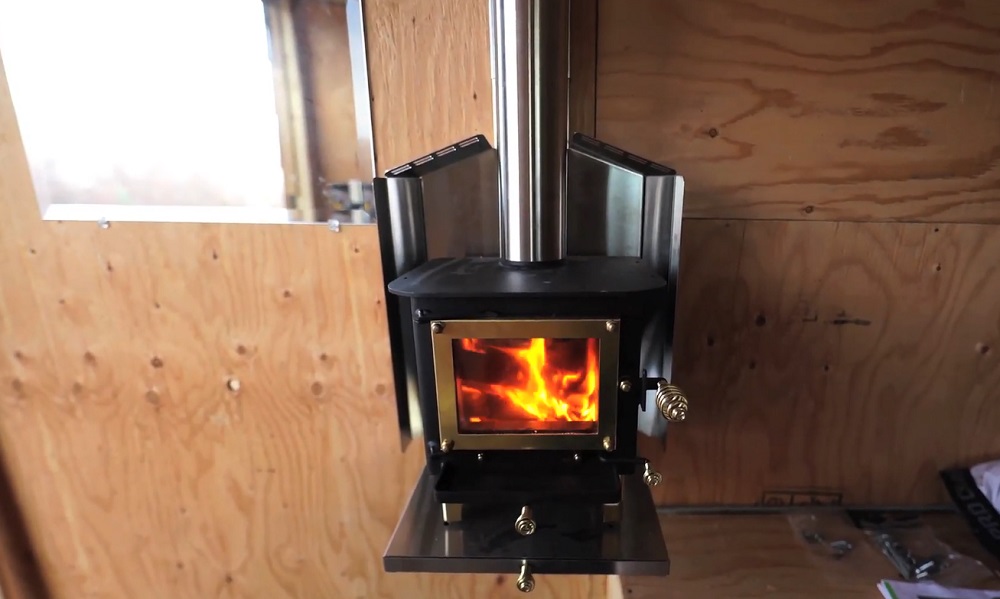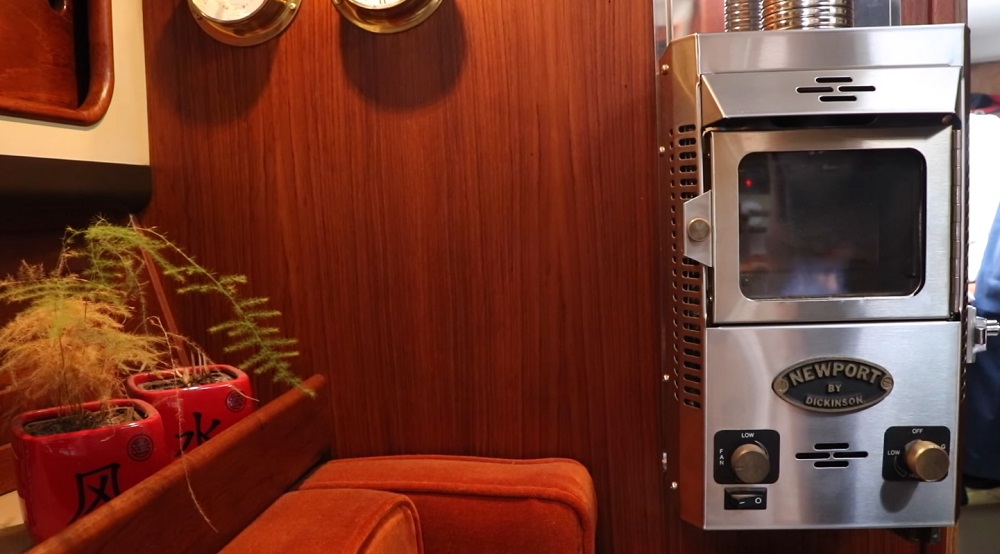The cozy warmth of fire takes us to the finest memories in life. An RV woodstove is more than a heating system; it is the centerpiece that creates the warmest atmosphere for enjoying the company of loved ones and sharing stories around the fire.

If you live in a tiny place, you know firsthand how challenging it is to create an inviting space with… well… not much space.
An RV woodstove will create a snuggly-warm atmosphere and give a unique character to your mobile home.
Wherever you go, you will always be looking forward to coming to crack the woodstove and bask in the soothing aroma of toasted wood.
Owning a nice RV woodstove is not a luxury but a wise investment that will significantly reduce heating costs.
Advantages of Wood Stoves in an RV
Most RVs operate on electric heat or propane. But there is hardly a better alternative to the cozy warmth of wood stoves.
They are also quite efficient in battling humidity and providing maximum comfort on chilly winter days.
In addition to providing that heart-warming crackling sound, RV woodstoves also eliminate the need for purchasing moisture-removing products.
It is a bright and lasting investment that cuts down the fuel cost. Firewood is much more affordable than propane or electricity and is available even when stealth camping.
Moreover, if your RV has enough room to fit a traditional wood stove, it can also double as a cooktop to slow cook or boil water.
A Wood RV Stove has Disadvantages as well
It is important to know that wood stoves do require some maintenance. You will need to cut the wood into smaller pieces for some smaller units, no more than 6 or 8 inches.
You might also need to constantly add fuel so that the fire does not go out at night.
Flue pipes and the stove require frequent cleaning, and you also have to clean out and dispose of ash periodically.

If you intend to use it in a stealth van or converted truck camper, you will need to cut a hole to fit the flue pipe.
Moreover, to prevent the air from getting dry, you might need to humidify by putting a kettle of water on the stove.
Alternative Methods for Heating Small Spaces
Having a woodstove is a commitment. You can interpret the labor required for operation as negative and positive features. It mostly depends on your tastes and lifestyle.
However, it is undeniable that a woodstove will create the ambiance that drives people to your place.
If you do not feel like going into the hustle of operating a wood stove, you should look into alternative ways of heating small spaces, such as propane or infrared.
FAQs
What is the smallest wood stove?
If you have restricted space, you might be wondering what the most miniature wood stove on the market is. In terms of cubic inches of the required length, it is the Dwarf 3kw Lite from Tiny Wood Stove (10×8.5×17 inches, or 1,360 cubic inches).
The Cubic Mini-Cub Wood Stove is a similarly compact one at 11x12x10.5 inches or 1,386 cubic inches.
These two compact wood stoves will provide the necessary heat to accommodate your needs while enabling you to utilize the limited space cleverly.

How to securely install a wood-burning stove in an RV?
Before enjoying the snuggly-warm atmosphere, you first need to install these beauties in your home correctly.
The most crucial step in installing is choosing a safe zone around the stove with a heat-shielding material to prevent the walls and other surfaces from getting excessively hot.
Another critical step is securely anchoring the stove so that it does not move around when driving and cutting a hole in the roof for fitting the flue pipe.
Once this is done, it is time to develop a driving cap to put on the top of the roof so that the air does not rush down the pipe and blow the ashes all over the place while you are driving.
Are wood stoves safe in an RV?
You might be wondering if having a wood stove in an RV is a good idea. The answer is “yes,” as long as it is installed and maintained correctly.


